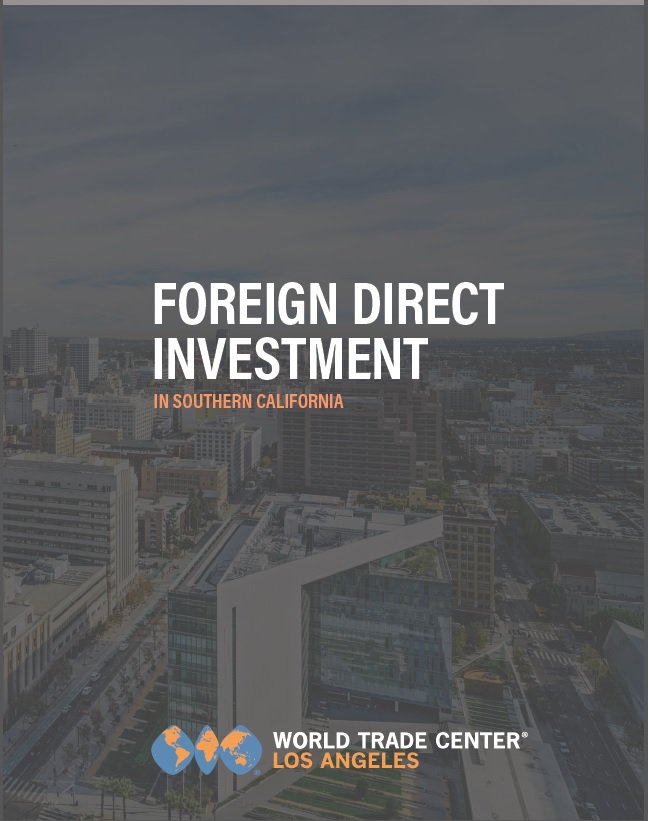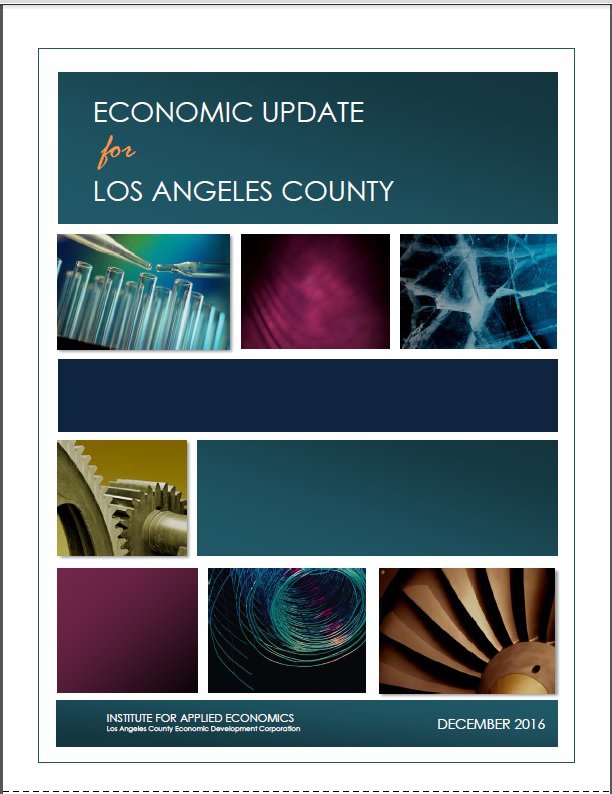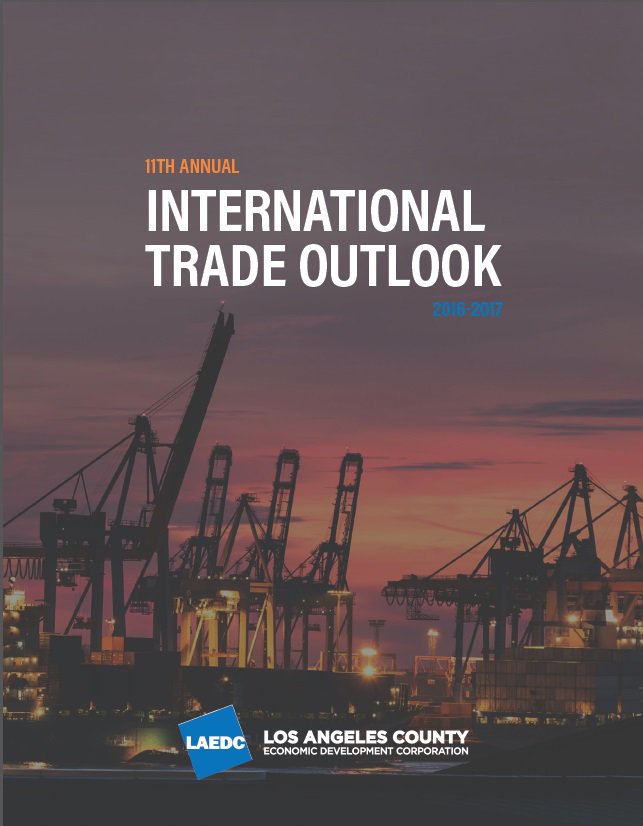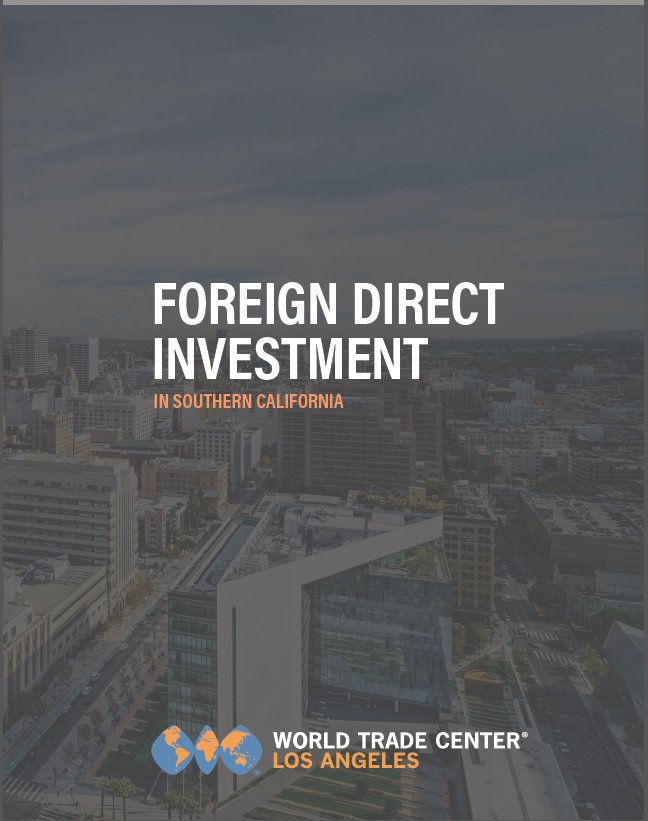Today, LAEDC affiliate World Trade Center LA released a report on the role of Foreign Direct Investment in the Southern California region.
Read the report HERE
Read media coverage:
LA Daily News: What growing global trade means for Los Angeles area businesses
KPCC: Which country invests most in LA? The answer might surprise you

WTCLA Report: Foreign Direct Investment Plays Significant Role in SoCal
LOS ANGELES, CA – (June 17, 2016) Today, at the SELECT LA Investment Summit, the World Trade Center Los Angeles (WTCLA) published a new report on the impact of Foreign Direct Investment (FDI) to the Southern California (SoCal) economy, revealing the number of foreign-owned establishments in the region and the jobs created by those employers, and ranking countries based on investment levels in the SoCal region.
The report, sponsored by Chair of L.A. County Board of Supervisors Hilda L. Solis in collaboration with JPMorgan Chase and other firms, underscores the tremendous amount of international connections that are essential to economic activities and jobs here in SoCal and L.A. County. The research was conducted by WTCLA affiliate LAEDC.
Findings of the report include:
- There are 9,105 foreign owned firms in SoCal, which directly employ 366,415 people, who receive estimated wages of $23.6 billion/yr. The economic impact of this activity sustains 8.1% of all jobs in SoCal (direct, indirect, and induced jobs).
- Manufacturing is the sector in which foreign owned firms employ the most workers in SoCal, with 116,721 workers, providing $6.8 billion in estimated wages.
- Foreign-owned enterprises in SoCal most commonly originate from 1) Japan with 2,440 firms and 79,421 jobs, 2) United Kingdom with 1,145 firms and 54,910 jobs, and 3) Germany with 825 firms and 32,594 jobs.
- Over the period of study, China was a relatively minor source of investment in SoCal until 2013 and 2014, years when investment rose dramatically to $1.1 billion and $1.5 billion, respectively. A. County received the bulk of that investment.
- In 2015, California had the most foreign investment “greenfield” projects of any state in the U.S., with 230 projects. New York ranked second (192) and Texas ranked third (147). In terms of total project value, California ranked fourth ($4 billion), with New York ranked first ($8.8 billion).
- Foreign investments in “greenfield” projects in SoCal totaled more than $29 billion from 2003-2015.
- The report also isolates the data specifically for the counties of Los Angeles, Orange, San Diego, San Bernardino, Riverside, and Ventura.
“In this global economy, the L.A. region is uniquely suited and appealing to foreign investors,” said Supervisor Solis. “Our draw combined with our international connections result in jobs and economic opportunity that provide benefits locally and throughout Southern California.”
As part of its commitment to foreign-direct investment in the region, JPMorgan Chase contributed $230,000 to WTCLA today to advance this effort.
“It’s eye opening to learn there are almost 10,000 foreign-owned firms in SoCal, employing more than a quarter of a million people,” said Joni Topper, Managing Director, JPMorgan Chase Commercial Bank Los Angeles. “Los Angeles is competing on a global stage and our competitors for jobs and investment are putting their best feet forward as regions, with solutions. We too must understand and embrace that when investment comes to Riverside and San Bernardino, to Ventura, or to Orange and San Diego Counties – Southern California benefits as a whole.“
The report release coincides with the 2016 SELECT LA Investment Summit, hosted by LAEDC affiliate World Trade Center Los Angeles.
In addition to the FDI report, WTCLA affiliate LAEDC also released its annual International Trade Outlook at SELECT LA. For details, visit www.LAEDC.org.
About World Trade Center Los Angeles (WTCLA)
As the leading international trade service and promotion organization in the Los Angeles region, WTCLA supports the development of international trade and business opportunities through our business assistance, matchmaking and educational services, and promotes Los Angeles as the premier destination for international trade and foreign investment. WTCLA has led or assisted in the attraction of more than $1 billion of foreign investment into Los Angeles County. The WTCLA is an affiliate of the Los Angeles County Economic Development Corporation (LAEDC). www.WTCLA.org
About the LAEDC
The Los Angeles County Economic Development Corporation (LAEDC) provides strategic economic development leadership to promote a globally competitive, prosperous and growing L.A. County economy to improve the health and wellbeing of our residents and communities and enable those residents to meet their basic human need for a job. We achieve this through objective economic research and analysis, strategic assistance to government and business, and targeted public policy. Our efforts are guided and supported by the expertise and counsel of our business, government and education members and partners. www.LAEDC.org
Media Contact: Lawren Markle / 213-236-4847 / [email protected]





 AFPM Communications provides insights from inside AFPM. To learn more about AFPM, visit
AFPM Communications provides insights from inside AFPM. To learn more about AFPM, visit  AFPM Communications provides insights from inside AFPM. To learn more about AFPM, visit
AFPM Communications provides insights from inside AFPM. To learn more about AFPM, visit 